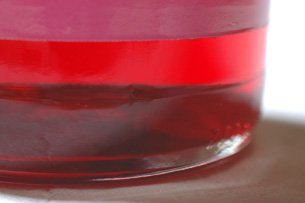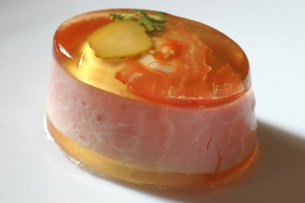
[Pierre Hermé’s Rose Syrup]
I attended the two-day Omnivore Food Festival in Le Havre last week, during which a number of renowned chefs gave cooking demonstrations.
Among them was Pierre Hermé: he didn’t actually pipe the ganache himself, but rather commented on his pastries as his sous-chef expertly assembled them onstage. The main focus of the presentation was the Ispahan — his signature pairing of rose, litchi and raspberry — and the wide range of variations he has weaved around it over time: macarons, entremets, tarts, chocolate, jam, ice-cream, and even a (non-edible) lucky charm.
I was very interested to learn that Pierre Hermé invented the Ispahan as he was working for Ladurée. It wasn’t a popular pastry back then and he sold very few. But still, he persisted and kept making them, because he thought the flavor pairing worked well, and he felt sure the public would come around eventually. He was right of course: when he set up shop under his own name on rue Bonaparte, the Ispahan quickly became — and remains to this day — his absolute best-seller.
What I really enjoyed about Pierre Hermé’s presentation was how precisely he described the recipes that were being demonstrated, making sure he shared the ingredients and the corresponding amounts. He seems to have enough confidence in his team’s skills and his own resources of creativity not to hoard secrets: his latest book documents his work over the past ten years in great detail, and he has helped create a pastry course at the Parisian cooking school Grégoire Ferrandi.







